A good rain poncho is waterproof, covers my legs, and is also lighter than any of my jackets. What is more, I usually wear it over my backpack, which makes the poncho significantly easier to wear and take off. Also, in the rain jacket vs poncho battle, the latter wins in terms of freedom and breathability.
To help you select the right rain poncho for your needs, I’ve tested ten of the market’s most popular models. I consider the Helikon-Tex U.S. Model Poncho to be the best of them all, mostly due to its multi-configurational versatility. Still, I recommend checking out the rest of the reviews – you just may find a poncho that suits you for walking the Camino de Santiago or any multi-day backpacking hike.
Best Rain Poncho Reviews
1. Adventure World Globotrekker Poncho
Specifications:
- Material: 210T Terylene
- Weight: 12.32 Oz
- Size: 51″ x 55″
The Adventure World Globotrekker Poncho offers solid rain protection for hiking and travel thanks to its waterproof and windproof construction. It kept me dry in downpours, and I appreciated design touches like the attached hood, snap closures securing coverage, and the built-in stuff sack with carabiner clip, which packs everything into an integrated bundle on my backpack.
However, sizing proved less versatile than I expected: At 51″ x 55″, the standard size still felt small and constricting, limiting my mobility. As such, the model is not the best option for folks who often carry large backpacks (see how to choose a backpack). Moreover, the lack of breathability and venting had me overheating rapidly, even in a 50°F drizzle.
Still, its budget-friendly price makes it a serviceable emergency shell – just don’t expect trail-ready performance on par with premium alternatives.
PROS:
- Kept me dry in heavy rain
- Integrated stuff sack for easy packing
- Budget price point
CONS:
- Limited sizing restricts motion
- Lack of breathability overheats
- Falls short of premium options
2. Foxelli Hooded Rain Poncho
Specifications:
- Material: 210T polyester
- Weight: 11 Oz
- Size: 95” x 55″
One of the most popular products of this type, the Foxelli Hooded Rain Poncho provides ample coverage and reliable water resistance during wet-weather hiking, mostly due to its adjustable hood and 210T polyester fabric.
I liked how small it rolls for packing. However, deploying this rain poncho is a whole different story: its Velcro fasteners made the whole process more difficult instead of easier (like it was advertised). Moreover, the poncho just didn’t provide enough protection for my arms – this is not something you’ll want to wear over a hoodie. On the bright side, the expansive 95” length kept my pack covered, while the hood brim kept the rain off my face.
Ultimately, the Foxelli stands as a worthwhile investment for infrequent users on a budget. If you’re an agility-focused athlete or a dedicated fastpacker, you’re better off upgrading to a higher-performing alternative.
PROS:
- Protects from rainfall with polyurethane coating
- Rolls tightly for backpack stowing
- Budget-friendly price point
CONS:
- Fussy Velcro fasteners complicate deploying
- Lacks athletic cut for dynamic motion
- Not enough arm protection
3. Frogg Toggs Ultra-Lite Poncho
Specifications:
- Material: Polypropylene
- Weight: 9 Oz
- Size: 39″ x 51″
After a week of thorough testing, I found that the Frogg Toggs Ultra-Lite Poncho provides the ultimate lightweight rain protection for hiking and emergency use. Its thin, nonwoven polypropylene construction ensured waterproofness while maintaining breathability, keeping me dry without overheating – very important in humid conditions.
Though lacking durability for long-term rough use, its low price easily minimizes replacement concerns. For its weight, I felt that sizing ran small: despite side snaps that allowed me to adjust coverage, I still experienced constricted arm motion on the trail.
However, the integrated stuff sack enabled impressive compression down to near nothing – something that I, whose storage space often runs slim, really appreciated. All in all, the Frogg Toggs Ultra-Lite Poncho brings welcome lightweight insurance against sudden storms at an affordable price, which is exactly what most rain poncho shoppers are looking for.
PROS:
- An impressively lightweight rain poncho
- Waterproof polypropylene construction
- Breathes well in muggy conditions
CONS:
- Lacks long-term durable dependability
- Constricting dimensions limit motion
- Fails securely covering larger packs
4. Anyoo Waterproof Lightweight Poncho
Specifications:
- Material: 210T ripstop polyester
- Weight: 11 Oz
- Size: 59″ x 39″
The Anyoo Waterproof Rain Poncho is yet another affordable product of this type that provides versatile multi-condition rain protection. In the case of this particular mode, the protection comes from the durable, waterproof 210T ripstop polyester shell. The poncho managed to keep me bone dry-in downpours without compromising breathability, aided by spacious coverage increasing (the much-needed) mobility.
Though not as lightweight as the model I’ve described above – the Frogg Toggs poncho – it still rolled down to roughly the size of an apple, stowing in its integrated pouch for improbable packability. I appreciated functional touches like the adjustable hood, snap side closuresm and an internal phone pocket. Still, this particular poncho may not be the best option if you’re on the shorter side – the excessive fabric drape could lead to tripping.
While the model’s durability certainly can’t be compared to purpose-specific trail shells, it is very cheap, thus removing longevity as a serious concern. Ultimately, the ultra-packable Anyoo makes a trusty companion, blocking the elements in a pinch despite limited technical chops for performance hiking.
PROS:
- Waterproof construction blocks downpours
- Highly compact for storage
- Budget-friendly price point
CONS:
- Excess material risks shorter folks tripping
- Lacks athletic cut for dynamic motion
- Falls short of technical shells’ resilience
5. Charles River Pacific Poncho
Specifications:
- Material: Polyurethane
- Weight: 14.5 Oz
- Size: 52″ x 80″
Thanks to its polyurethane-lined knit shell, the Charles River Pacific Poncho offers genuinely fantastic rain protection. I really liked how its fabric stretched smoothly rather than rustling loudly amidst wind, as well as how its sealed seams kept me completely dry despite the downpour. The model’s uniquely elongated silhouette, on the other hand, guarded my frame down to the knees, while an adjustable hood cinched visibility during gale-force showers.
The poncho’s streamlined button snaps added polished looks, belying the budget price tag. However, I found the model’s sizing quite disappointing: I measured lost coverage on each flank when wearing my backpack, despite promises of compatibility. Similarly the thin, clingy material impaired mobility on twisty trails.
Nevertheless, I remained fully dry during drizzly city strolls, as well as while backpacking in the rain in the nearby hills. So while failing truly technical or plus-sized scenarios, the Pacific Poncho can and will keep you dry – which is, ultimately, the thing that matters the most.
PROS:
- Sealed seams prevent interior wetness
- Elongated coverage reaches knees
- Stylish looks disguise budget pricing
PROS:
- Constricting fabric limits athletic use
- Smallish sizing misses plus-sized frames
- Backpacks compromise flank protection
6. Snugpak Patrol Poncho
Specifications:
- Material: Paratex Dry ripstop fabric
- Weight: 12.8 Oz
- Size: 75″ x 60″
Offering heavy-duty rain protection ready for rugged use, the Snugpak Patrol Poncho is among the market’s most popular pieces of hiking apparel of this type. Thanks to its 5000mm hydrostatic head Paratex Dry ripstop shell, I was dry even in a heavy downpour – not the experience I had with cheaper models that feel almost like garbage bags. I also appreciated design touches like the expansive storm hood – which cinches securely in gales – and the hook-and-loop sealed sleeves, which do an excellent job at retaining interior warmth.
Unfortunately, however, this rain poncho is not without drawbacks. Despite promises of backpack coverage, I still experienced spray exposure around my hip belt region during testing. Similarly, the roomy dimensions impaired my mobility on twisty trails as wet fabric stuck to my legs.
Still, the model’s emergency bivy potential brings welcome insurance when pushing alpine limits. So, while certainly not the most technical poncho out there, the Patrol Poncho offers a resilient construction that excels at protecting its wearer in truly bad weather.
PROS:
- Bombproof Paratex Dry material weatherproofs relentlessly
- Hook-and-loop arm seals prevent interior drips
- Roomy dimensions enable emergency bivy use
CONS:
- Bulky fabric stuck to legs when active
- Hipbelt region still exposed wearing backpack
- Excess material risks shorter folks tripping
7. SaphiRose Unisex Poncho
Specifications:
- Material: Polyester
- Weight: 10.9 Oz
- Size: 45″ x 63″
The next rain poncho in my roundup, the SaphiRose Unisex, sports a full-length zipper that enables adaptable coverage. Its sealed seams ensured complete dryness no matter the weather conditions I tested it in. What’s more, its integrated front pouch swallowed my phone, keeping it at arm’s reach, while its adjustable hood improved visibility in gales. Lastly, the poncho’s dual-side snaps customized the fit around my frame.
When it comes to drawbacks, I measured lost backpack coverage on each flank despite promises of compatibility. In a similar manner, the roomy dimensions of this poncho impeded my mobility on tricky trails, with wet fabric sticking to my legs.
Still, the zipper’s adaptable access and storage pouch brought versatility I missed on other emergency shells. So while not the most functional rain poncho available on today’s market, the SaphiRose can still be an agile companion when sudden showers strike amidst everyday excursions.
PROS:
- Full-length zipper enables adjustable coverage
- Integrated front phone pouch
- Side snaps customize shape
CONS:
- Constricting fabric limits athletic motion
- Backpacks compromise flank protection
- Excess material risks tripping
8. VAUDE Backpack Poncho
Specifications:
- Material: Polyamide
- Weight: 15.5 Oz
- Size: 55″ x 28″
A newcomer in the world of rain ponchos, VAUDE already has a loyal following, and for a good reason. Their Hiking Poncho provides specialty rain protection for loaded adventures, mostly thanks to its backpack-integrating zippered panel securing coverage. Both the polyamide fabric and the sealed seams kept me dry in a heavy storm – an excellent performance which, admittedly, I did not expect. Other praiseworthy features include an integrated front pocket, adjustable hood, and a high collar.
However, the fixed sides and the backpack panel restricted cross-ventilation – I measured accumulated interior moisture after just moderate exertion. This also limited poncho-only agility for thriftier trips. Moreover, the model’s single-piece design complicated throwing it on quickly in case of sudden showers.
Still, the backpack-boosting panel brings welcome versatility missing among normal shells. Although not the best option in terms of breathability and packless flexibility, VAUDE’s poncho still sports a unique construction that excels at shielding its wearer, making it a worthwhile purchase.
PROS:
- Integrated backpack panel maintains coverage
- Highly compactable into attached front pouch
- Multi-action hood allows reliable tightening
CONS:
- Breathability falters hiking with a backpack
- Single-piece inhibits quick donning
- Fixed sides prohibit flexibility without a pack
9. Helikon-Tex U.S. Model Poncho
Specifications:
- Material: Polyester
- Weight: 17 Oz
- Size: 83″ x 57″
The Helikon-Tex Poncho provides a versatile rain protection thanks to its genuinely adaptable design, enabling multiple configurations. During the testing period, its ripstop polyester construction ensured waterproofness through taped seams, while four integrated eyelets enabled transforming the poncho into a shelter from the rain (read the ultimate guide to poncho tarp tents). An integrated pouch compacted the bundle, while the adjustable hood kept the rain off my face.
However, I’m sure that the fixed sizing will leave taller users partially exposed – I measured accumulated moisture on my legs during a downpour. This also limited motion until I activated the Velcro sleeve poppers, which allow customized coverage. Moreover, the easily deployed tarp brought welcome versatility, something that’s often missing among normal shells.
Overall, the Helikon-Tex Poncho’s adaptable construction excels at shielding users and gear. It stands as a great choice for folks who often find themselves hiking in poor weather.
PROS:
- Ripstop polyester resists tearing
- Multi-configuration design enhances flexibility
- Packs into an integrated pouch
CONS:
- Limited adjustability leaves wearers exposed
- Fixed sizing can’t accommodate all users
- Breathability suffers without ventilation
10. Arcturus Waterproof Poncho
Specifications:
- Material: Triple-layered polyurethane-coated ripstop nylon
- Weight: 10.9 Oz
- Size: 54″ x 48″
The last rain poncho on my list – Arcturus Rain Poncho – offers stellar rain protection for outdoor locomotion with its triple-layered polyurethane-coated ripstop nylon shell. During the testing period, the construction had no trouble repelling heavy downpours and denying soakthrough despite condensation contact from my perspiring backpack. I also appreciated the capacious, sweeping silhouette, which allowed me to kneel amidst soggy fields, while safeguarding my pack.
However, even though it promises emergency shelter conversion, the model’s fussy multi-configuration hampered brisk deployment as storms approached. I’m not saying that this should stop you from considering the poncho for purchase, though – it’s a genuinely cheap piece of outdoor apparel, and one that’s not meant to be used for multiple years anyway. All in all, it is the niche-focused backpackers who will benefit most from the Arcturus’ specialty design that will shield their cargo during soggy outings.
PROS:
- Triple-layered waterproof construction endures abuse
- Roomy cut permits kneeling motions
- Highly affordable for dedicated users
CONS:
- Multi-configuration complicates swift donning
- Lacks casual user packability
- Narrow focus limits broad appeal
Best Rain Ponchos Buying Guide
Reliable is better than unreliable; well-ventilated is better than clammy; cheaper is better than expensive; lighter is better than heavier; and longer is better than shorter.
That would be the simplest version of a buying guide for rain ponchos. If you’re serious about buying one of these handy garments, I recommend you to keep reading – I’ll cover everything in greater detail down below.
Related:
Choosing the Right Material and Construction
When I pack for a hiking trip, ensuring that my gear is reliable is a top priority. This is especially true for the rain poncho, where the material and construction can make or break my comfort and protection from the elements.
Waterproof Materials
Choosing a poncho with the right waterproof material is crucial for staying dry.
PVC is a common choice due to its water-resistance and affordability. However, it’s not as breathable as other materials. Ripstop nylon with a polyurethane coating offers a balance between waterproofing and breathability, which is great for strenuous hikes.
For the ultralight enthusiasts, Cuben Fiber (also known as Dyneema Composite Fabric) is an excellent, albeit pricier, option with superior waterproof capabilities. Another lightweight option is sil-nylon, which is nylon treated with silicone to repel water effectively.
Finally, there’s sil-poly, a recent addition that combines polyester with silicone treatment to increase waterproofness while keeping weight down.
- PVC: Affordable, very waterproof, but less breathable.
- Ripstop Nylon with Polyurethane Coating: Balance of waterproofing and breathability.
- Cuben Fiber: Ultralight, excellent waterproofing, more costly.
- Sil-Nylon: Lightweight, silicone-treated nylon for water repellency.
- Sil-Poly: Good waterproofing, lightweight, silicone-coated polyester.
Durability and Design Features
The durability of a rain poncho is just as important as its ability to keep water out.
Ripstop nylon is not only water-resistant but also designed to prevent tears from spreading. Look for reinforced seams and additional features like taped seams, which prevent water from seeping through stitch lines.
Design features might include adjustable hoods, pockets, and vents to increase breathability and comfort. My personal preference is a poncho that covers my backpack as well, providing extra utility.
The key is to find a balance that suits my hiking needs, considering the type of terrain and weather I expect to encounter.
- Ripstop Nylon: Resistant to tearing, good for rough terrain.
- Reinforcement: Ensures durability; look for taped seams.
- Design Features: Adjustable hoods, pockets, and vents for comfort.
- Backpack Coverage: An additional utility for backpackers.
In selecting materials and construction, I weigh in all these specifics to make sure my rain poncho won’t let me down when I face the rain on a hike.
Finding the Perfect Fit and Comfort
When I’m selecting a rain poncho for hiking, ensuring it fits well and offers optimal comfort is paramount. Let’s look into how proper sizing can enhance coverage and explore comfort features that add to the overall hiking experience.
Sizing and Coverage
Considering the size of the poncho to ensure it covers you effectively without hindering your movement is essential. I always start by looking at the manufacturer’s sizing chart, since sizes can vary between brands. I make sure the poncho is long enough to shield my backpack, as well.
When it comes to length, the poncho should cover you down to at least mid-thigh. In terms of width, make sure you have ample room for your arms and any layers you might wear beneath. As for the adjustable features, look for hoods with drawstrings and wrist straps – these offer a more customized fit.
Keep in mind that a poncho that’s too large can be cumbersome, while one that’s too small may not provide adequate protection.
Comfort Features
Comfort goes beyond just fit—it’s also about how the poncho is designed for prolonged wear during a hike.
Remember that a breathable material can and will prevent overheating, as well as reduce condensation. You will also want to look for ponchos with underarm vents to help regulate temperature. Soft fabric is another important consideration – it won’t irritate your skin during long hikes. Finally, an adjustable hood is essential for maintaining visibility and keeping your head dry.
These features can make a significant difference in how comfortable I feel throughout my hike. A breathable and properly ventilated poncho with a well-designed hood and skin-friendly fabric will keep me focused on the beauty of the trail rather than any discomfort.
Additional Functionalities
Over the years, I’ve come to realize that some additional features can really enhance the functionality of a simple rain poncho. Let’s take a look at the importance of pockets and ventilation, as well as the versatility offered by convertible poncho options.
Pockets and Ventilation
Pockets are vital for easy access to essentials like maps, snacks, or a compass. I usually look for ponchos with sealed zipper pockets, as they keep items dry and secure. Inner pockets are always nice, too – they’re useful for items that don’t need to be waterproofed.
Ventilation can prevent the build-up of condensation inside the poncho, making for a more comfortable hike. This is why it’s important to look for underarm zippers or flaps, since they improve air circulation without letting in water. If possible, get a poncho featuring back vents as well – these allow for airflow and can reduce overheating, particularly with a backpack on.
Convertible Poncho Options
A backpacking poncho that doubles as a tarp or shelter is invaluable. I prefer ones with grommets or loops, allowing me to convert the poncho into a tarp tent.
Convertible ponchos may also include drawstrings (for a snug fit around the face and waist) and zippers (these can transform a poncho into a groundsheet or add modularity).
Convertible options are especially useful as they serve multiple purposes, making them a great choice for minimizing my pack weight and increasing my preparedness for various weather conditions.
Practicality for Hikers
When I hit the trails, I need a rain poncho that complements my adventure without getting in the way. It’s essential to find one that works well with your backpack and is simple to pack and store. Let’s get into the specifics!
Compatibility with Backpacks
I always look for a poncho that is designed to accommodate a backpack. This means a broader cut in the back or additional space that covers the pack without restricting my movement. It’s a true game-changer for backpacking trips to have a lightweight poncho that integrates a pack cover, ensuring your gear stays dry too. Some ponchos even come with backpack straps, allowing one to wear it seamlessly over the backpack.
Ease of Packing and Storage
A huge plus for me is when a poncho is lightweight and can be folded into a compact size. It makes it so much easier for me to pack it in my carry bag or storage bag without sacrificing valuable space. For those sudden downpours, a poncho that unpacks quickly from its bag and offers quick, over-the-head protection is ideal.
Frequently Asked Questions
What features should I look for in a high-quality hiking rain poncho?
A high-quality hiking rain poncho should be made of durable, waterproof, and breathable material. Look for taped seams to prevent leaks and an adjustable hood that can accommodate a headlamp or hat. I recommend a poncho with side snaps or zippers for better mobility and airflow.
What are the benefits of using a lightweight poncho for hiking?
A lightweight poncho is easy to pack without adding much weight to your backpack. It offers quick protection during sudden downpours. Additionally, a lighter poncho often means faster drying times, and when not in use, some can double as a ground sheet or shelter.
How do ponchos compare to raincoats for staying dry while hiking?
Ponchos generally provide more airflow than raincoats, reducing sweat condensation inside. They often cover more of your body and your backpack, offering better overall protection. However, in windy conditions, a poncho can be less manageable than a fitted raincoat.
Why do some backpackers don’t like ponchos?
Some backpackers find ponchos cumbersome, especially in windy conditions where they can flap around. Ponchos can also snag on branches more easily than snug-fitting rain jackets. Some hikers might prefer the tailored fit and features of a raincoat such as pockets and better ease of movement.
How to care for a rain poncho?
To care for a rain poncho, first, shake off any excess water and hang it to dry after use. Clean it according to the manufacturer’s instructions, which typically suggest gentle washing without fabric softeners. Store your poncho loosely folded or hung up to avoid damage to the waterproof coating.
Conclusion
Hopefully, my analysis of the market’s most popular rain ponchos – as well as the buying guide – was of some help to you in selecting the best model for your particular needs.
As I said, I consider the Helikon-Tex U.S. Model Poncho to be the most practical garment of this type currently available on the market. However, if you’re looking for something more flexible or breathable, read the rest of the reviews – one of the ponchos I examined above is bound to meet your requirements.

I love hiking, backpacking, and camping. From the Camino de Santiago to the West Highland Way in Scotland or simply a great day hike on the weekend. Hiking refreshes me, my mind, and keeps my body reasonably fit. So far I have walked three Camino routes and many other long distance hikes in the UK, Canada, and around the rest of Europe. One of the best was my hike up Ben Nevis.

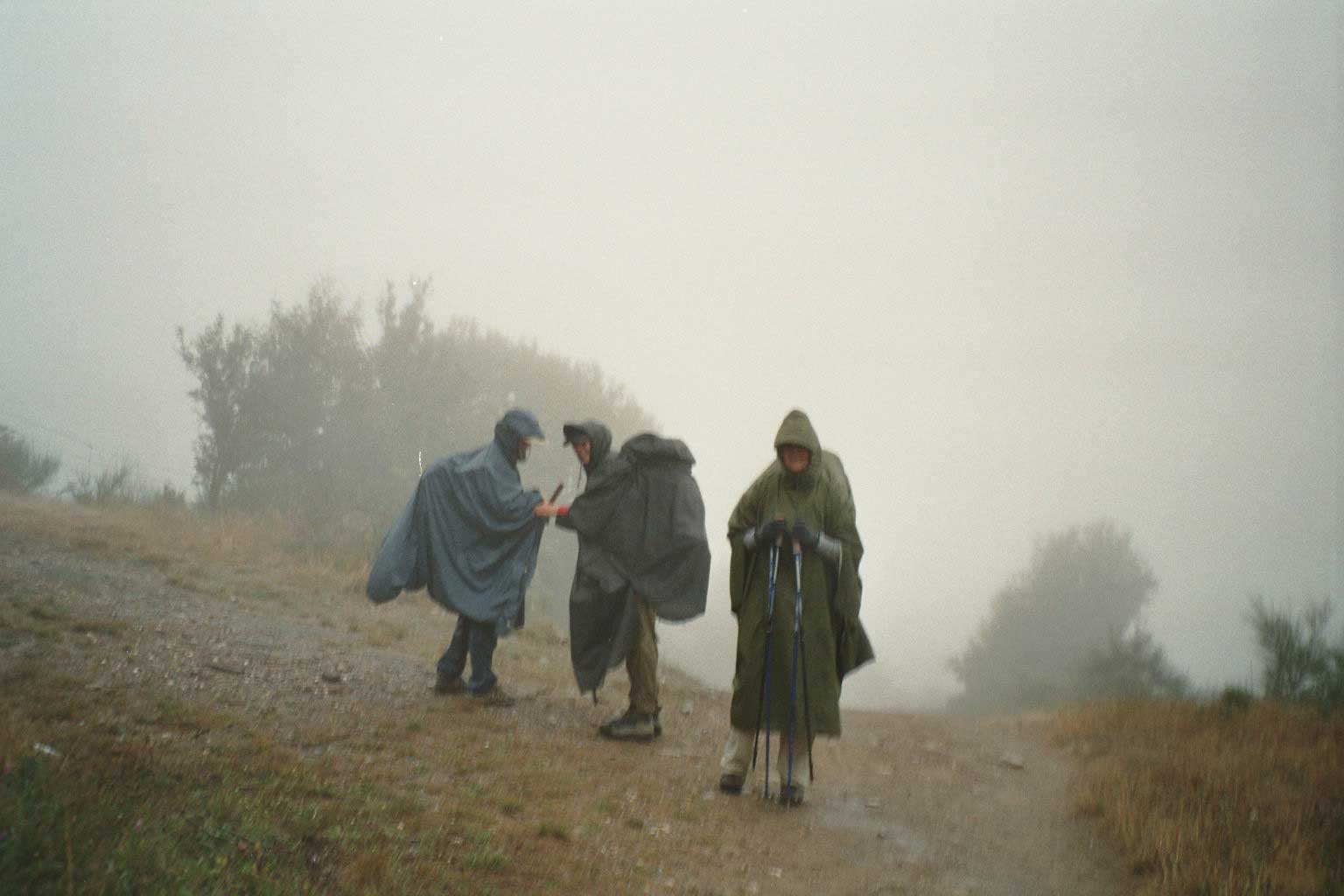
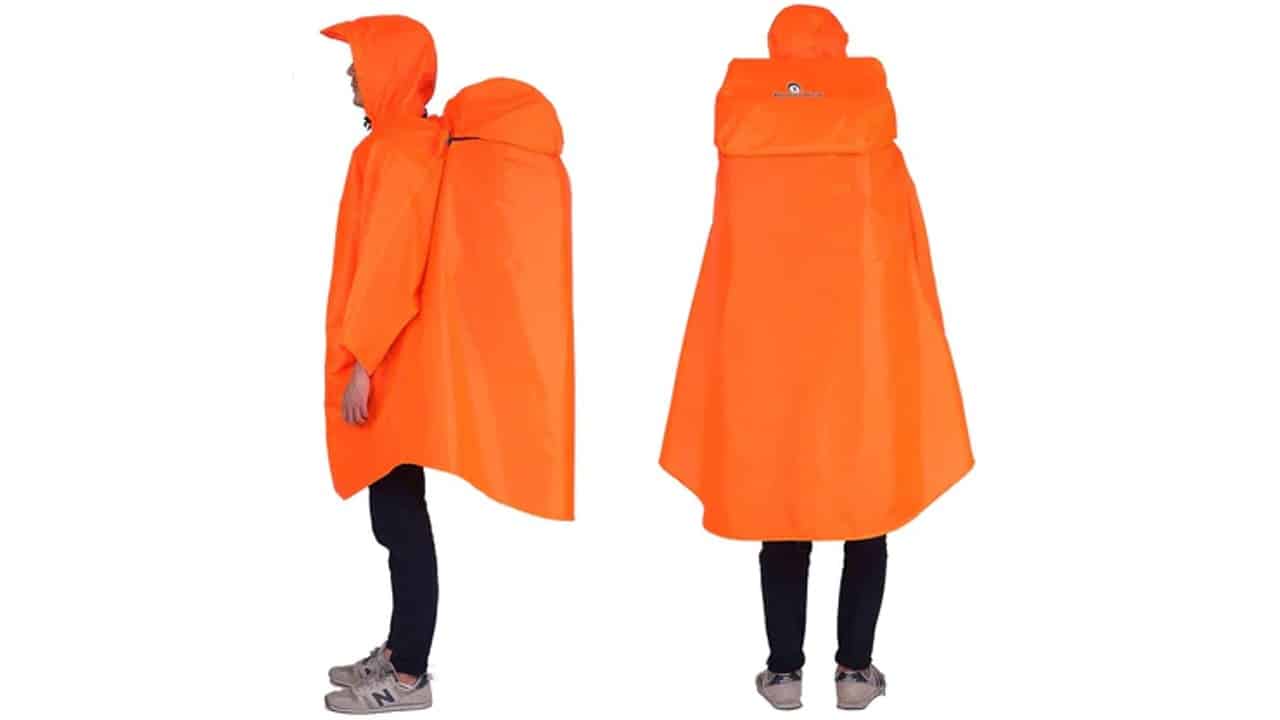
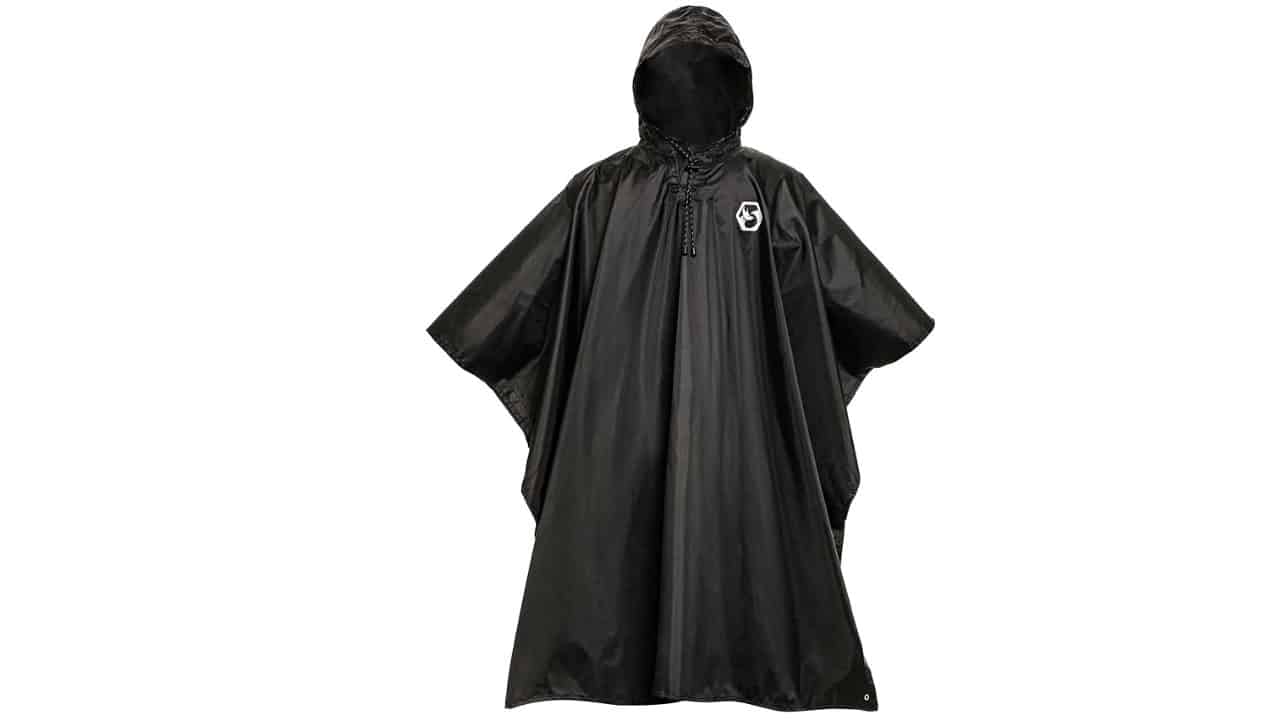
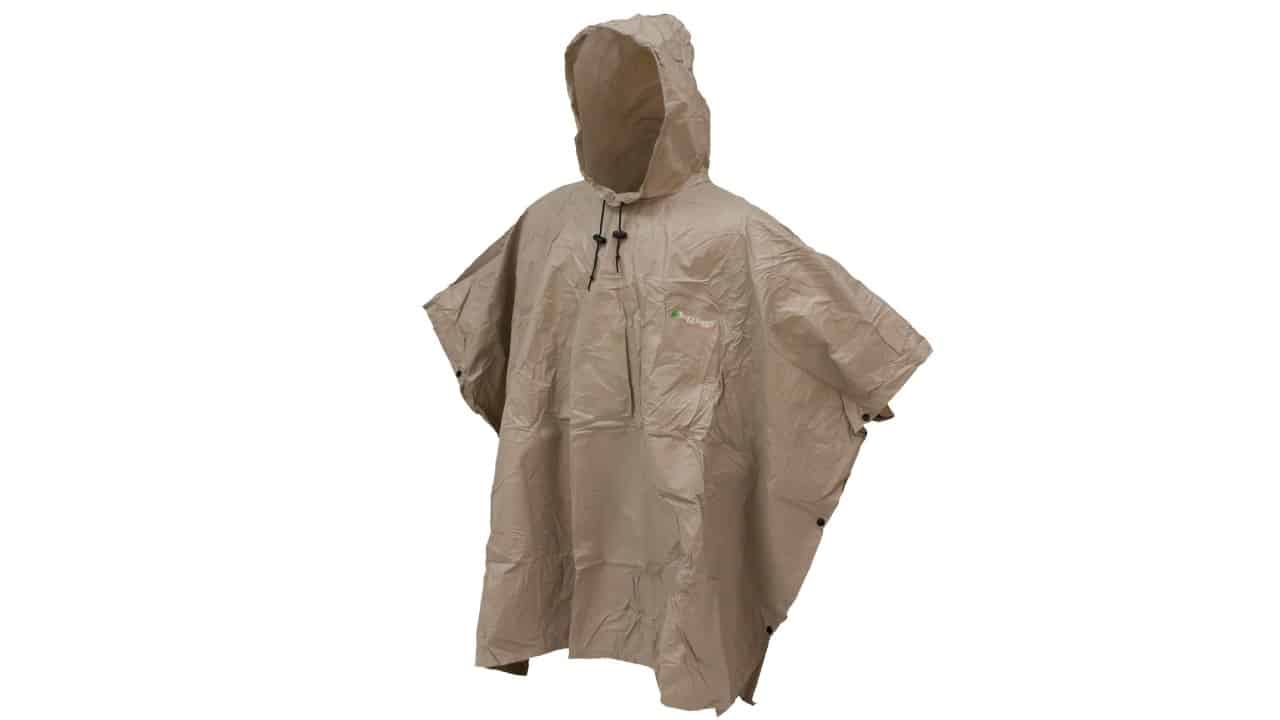
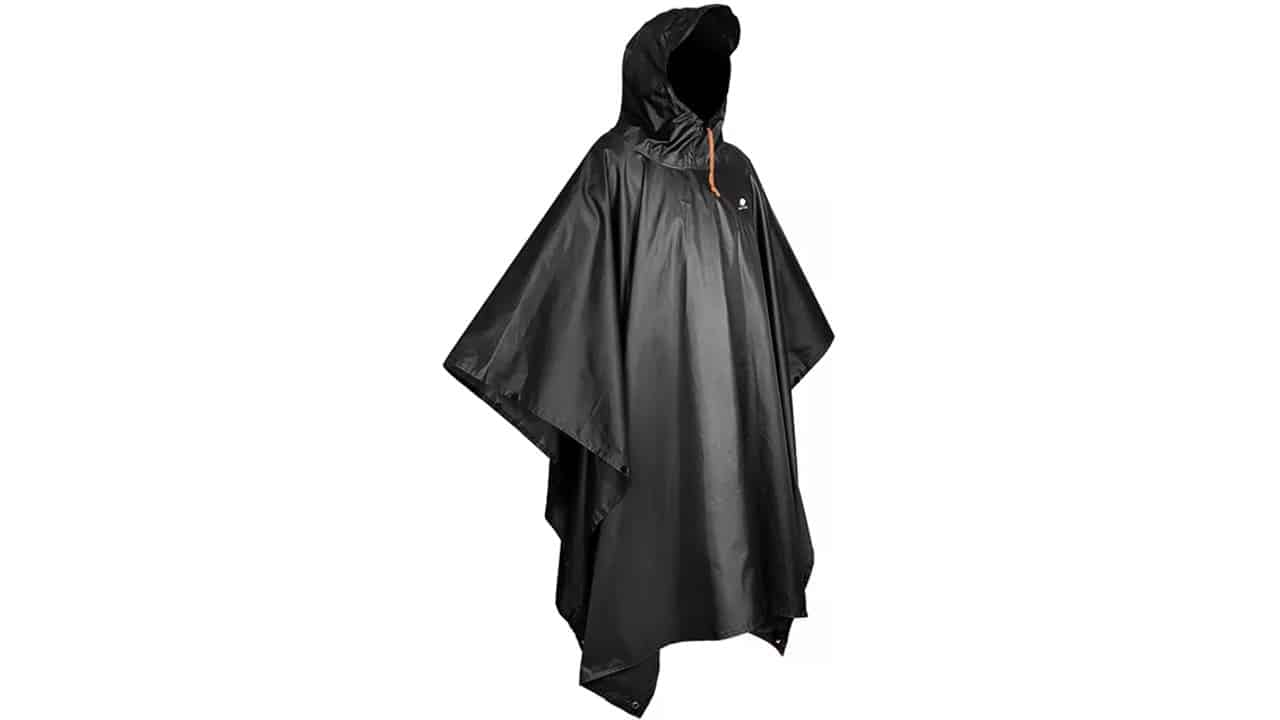
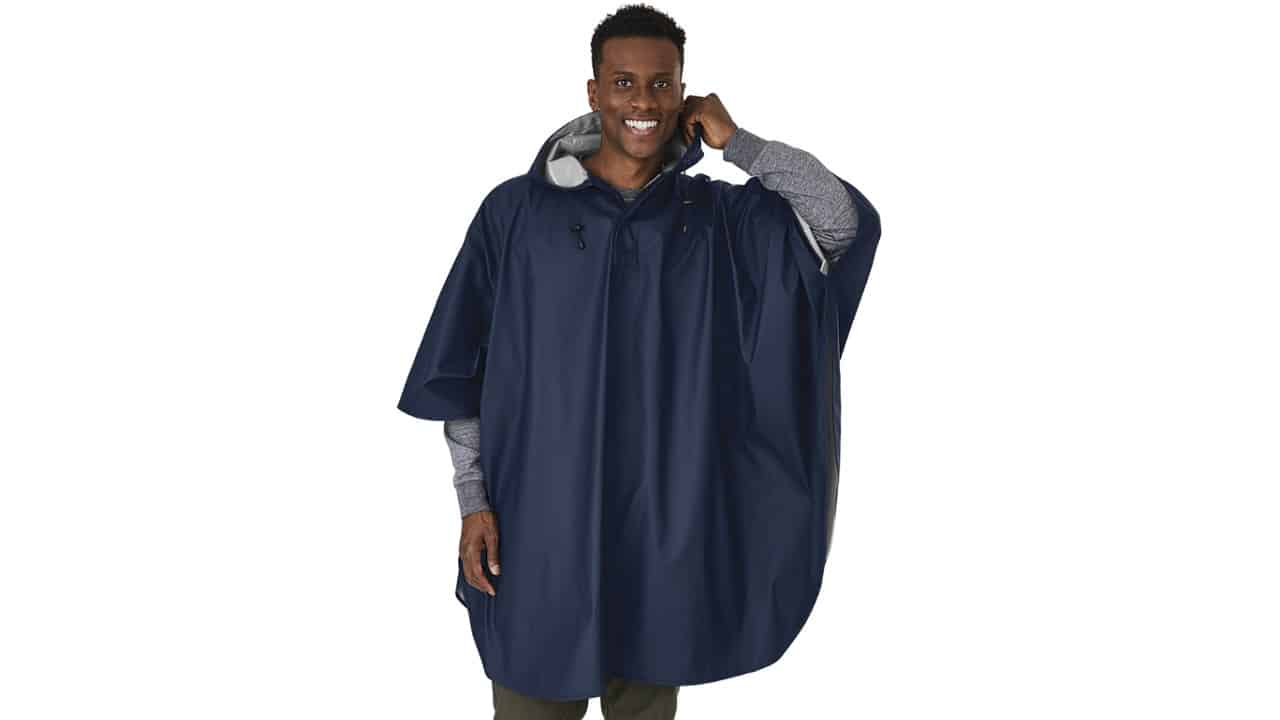
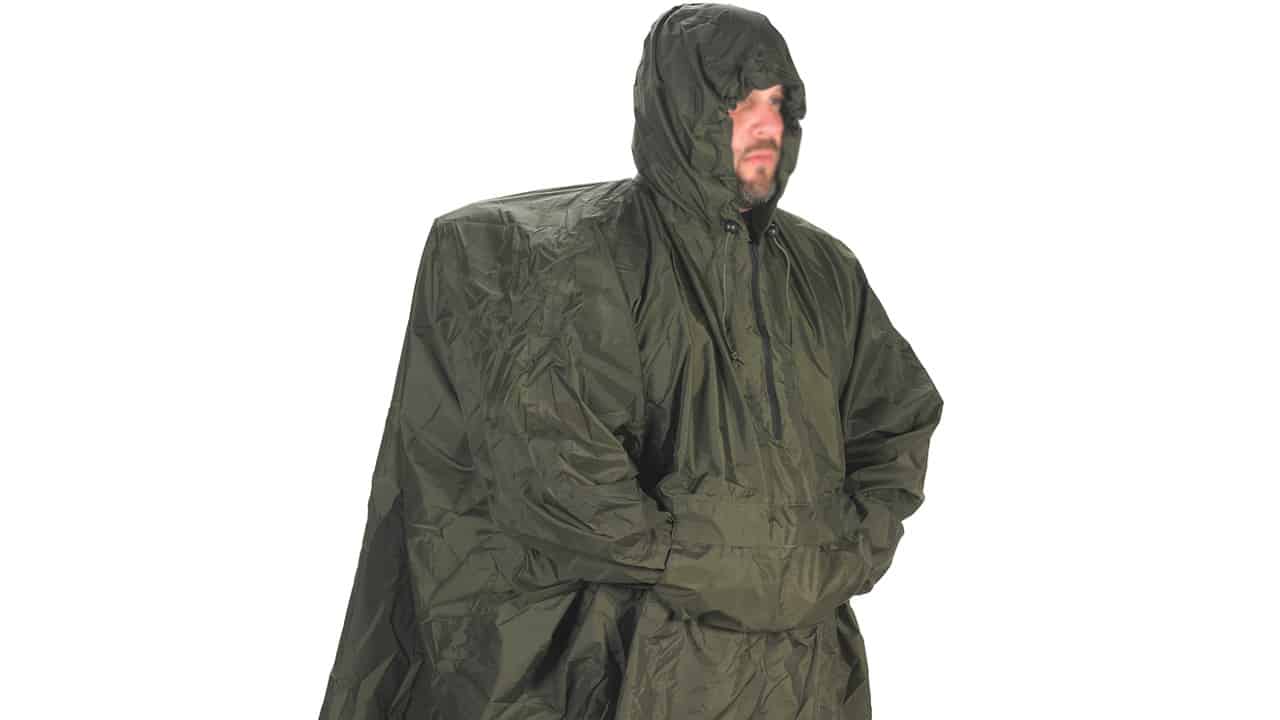
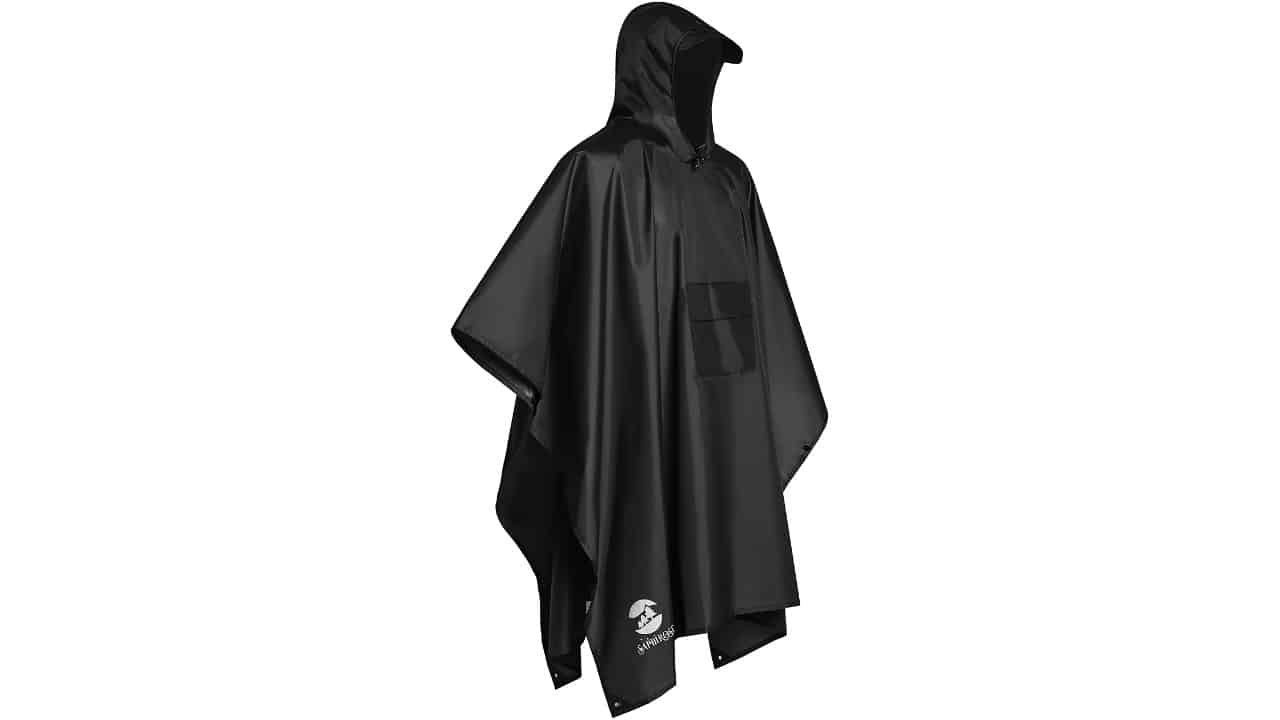
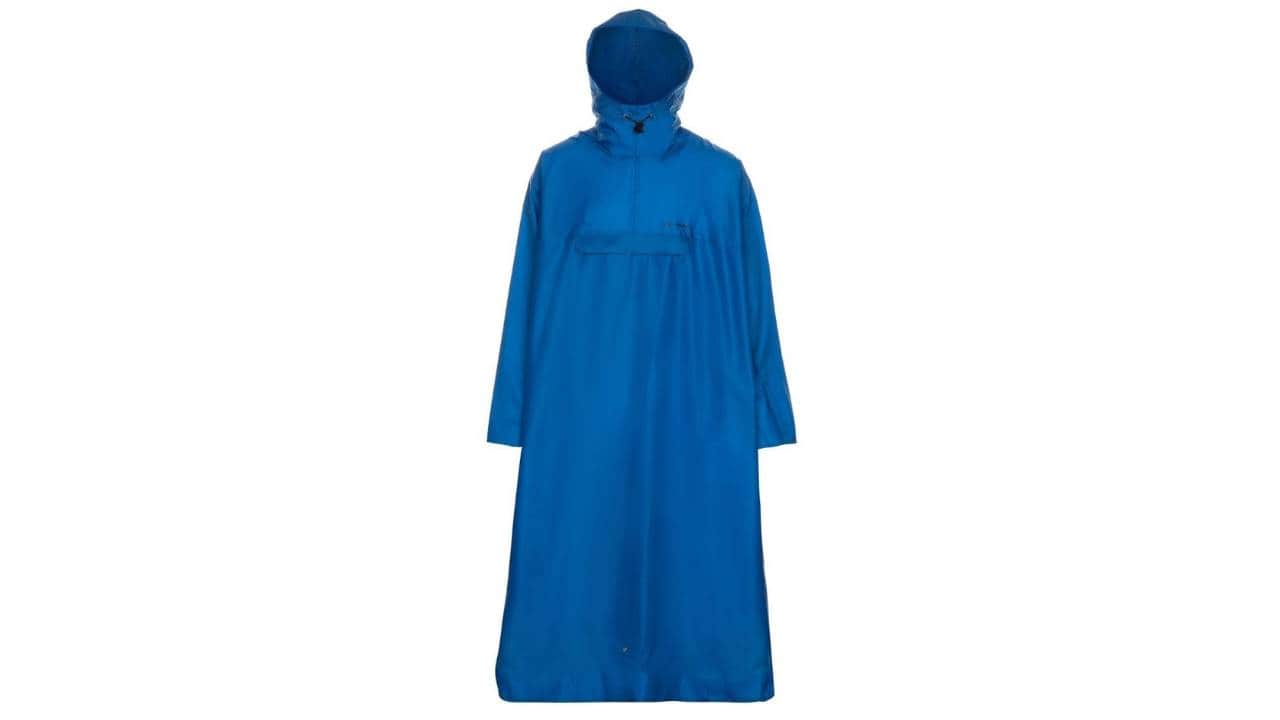
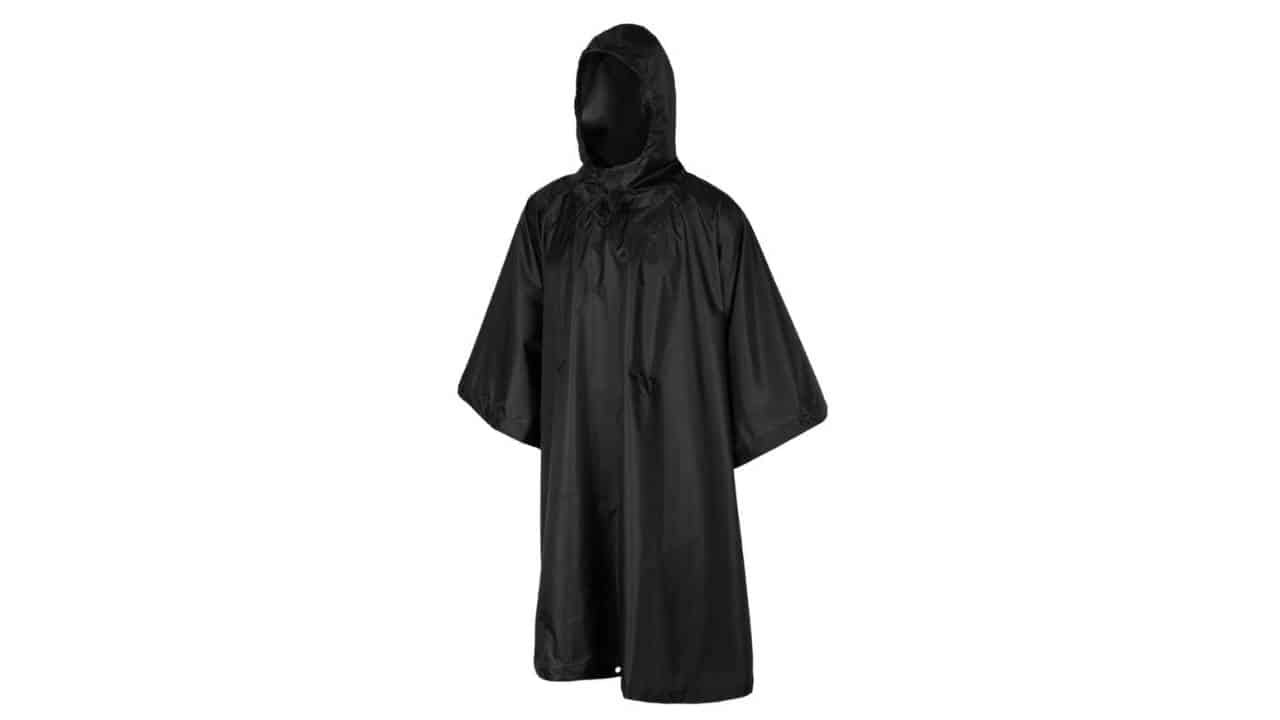
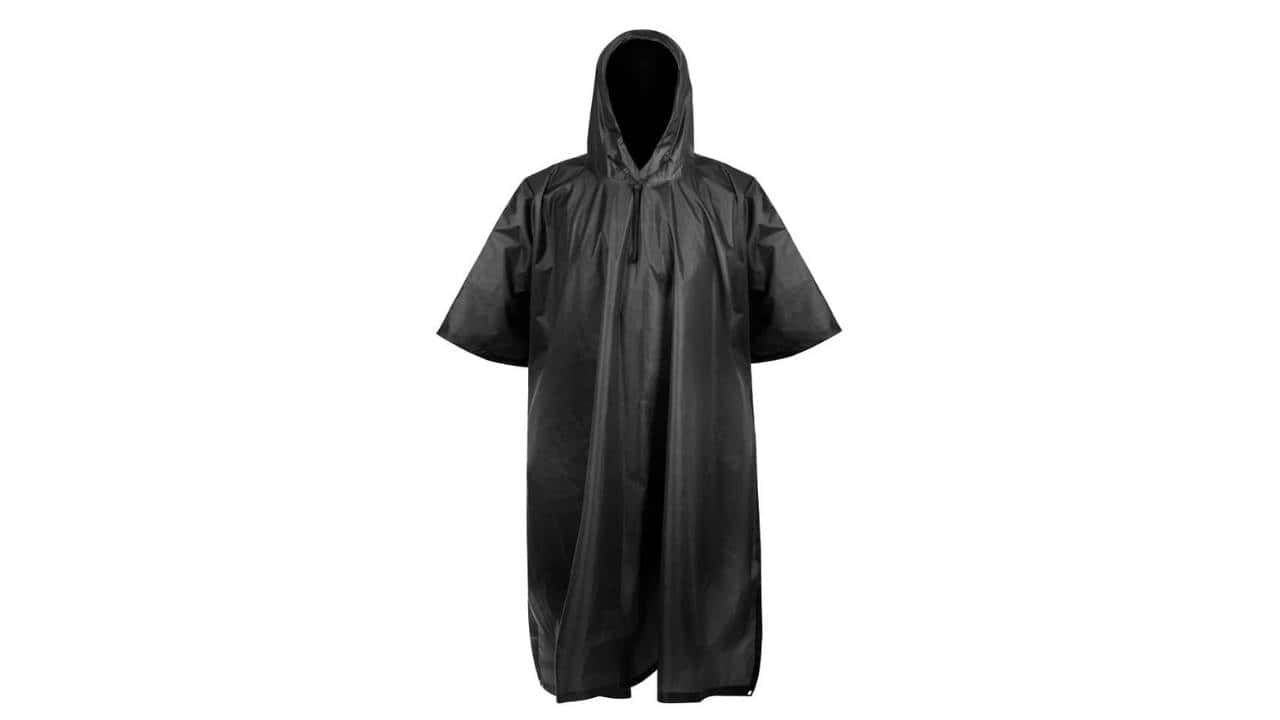

I seen one of those guys add a poncho that could turn into a tent or a sleeping bag or lean to that’s what I’m looking for
One of the 1st things I learned in the army was that ponchos are used to wrap around your weapon to keep it dry, not to keep you dry. We used ponchos for ourselves when stationary duty like guard duty. When moving we wore rain jacket and rain pants. On 5 Caminos I cariedy rain suit and TWO ponchos. Why two? One for a ground cloth and one to cover me in my sleeping bag. But I have never had to use the two ponchos yet. Perhaps next month on the Sanabres?